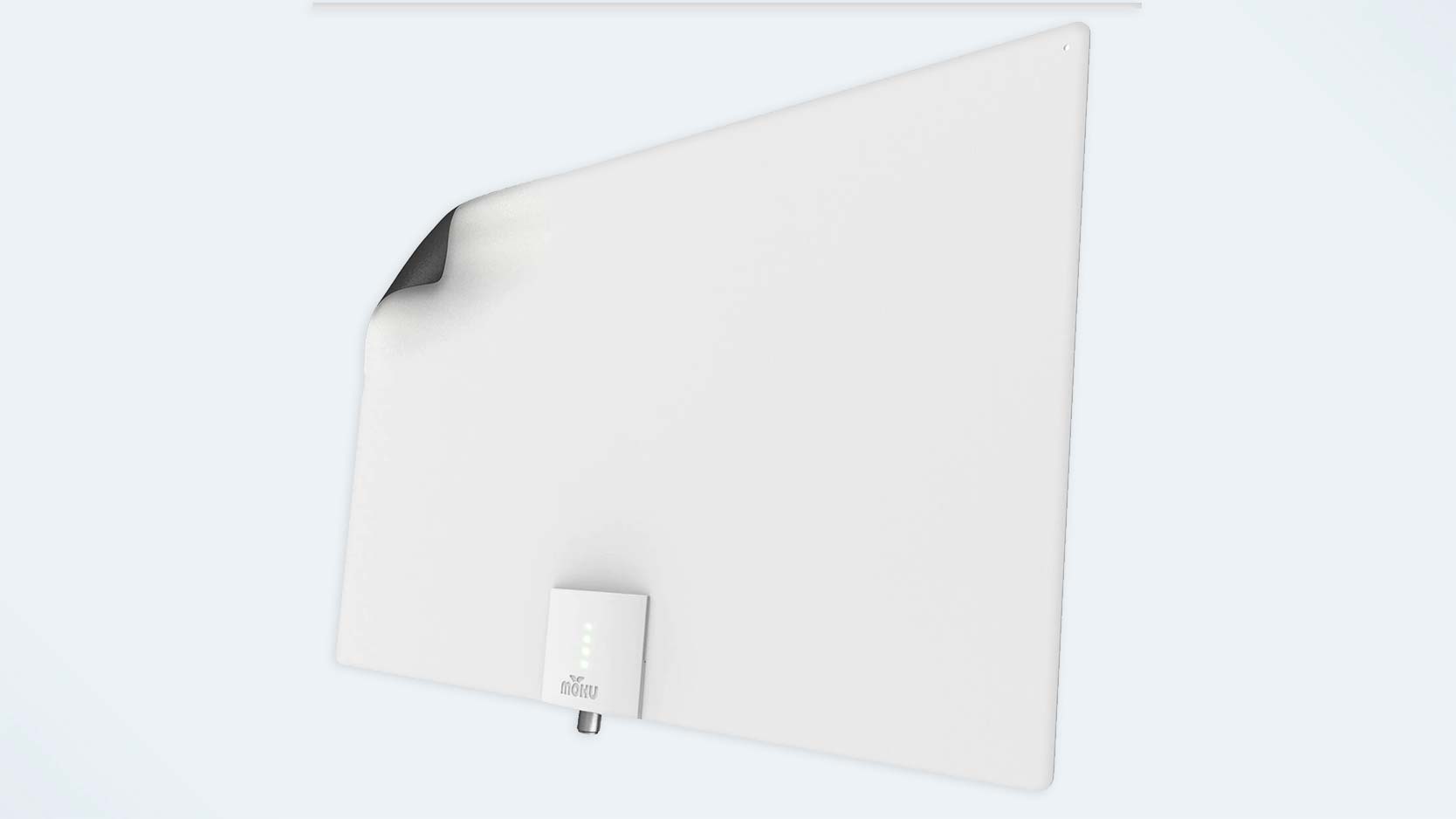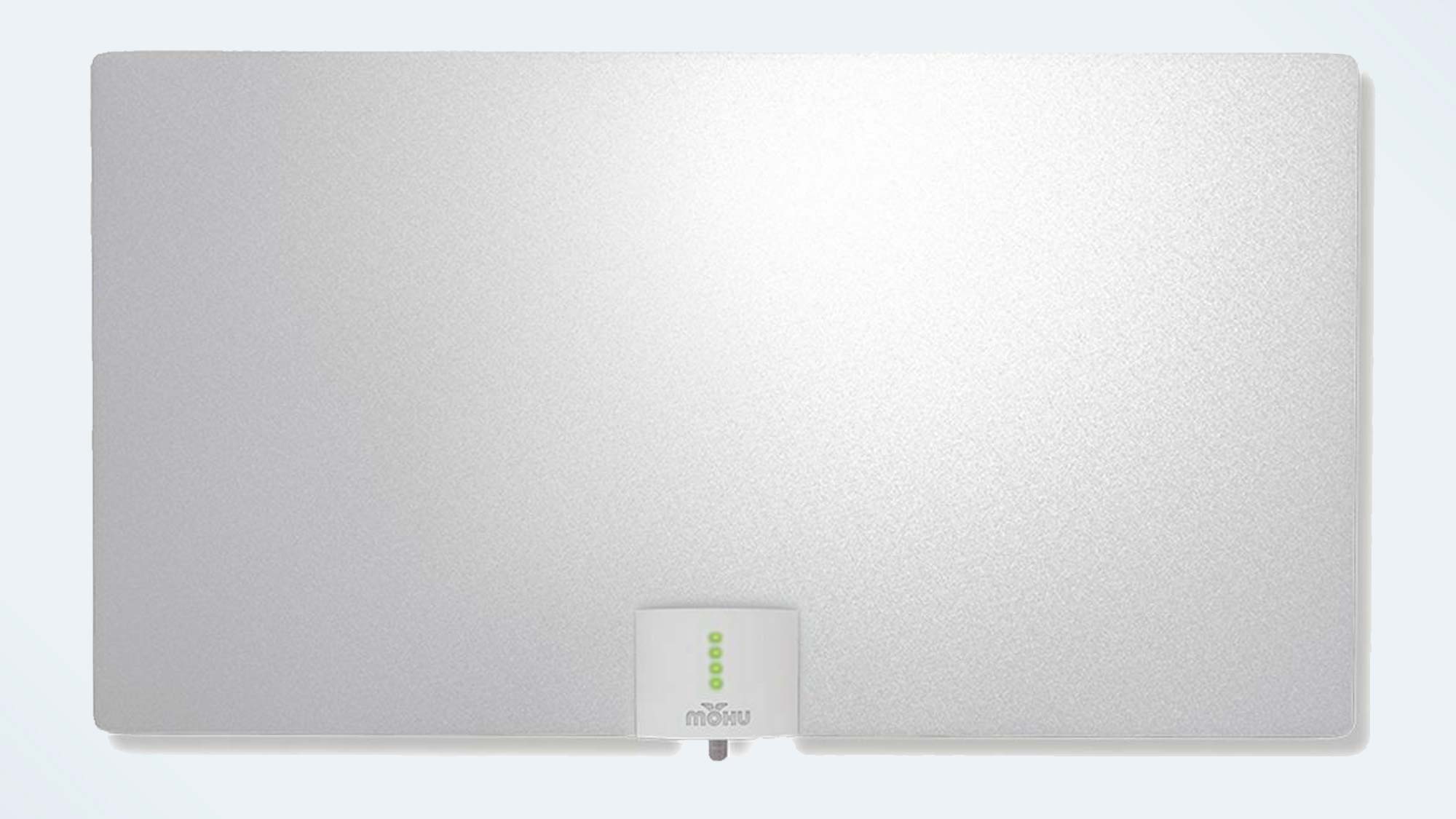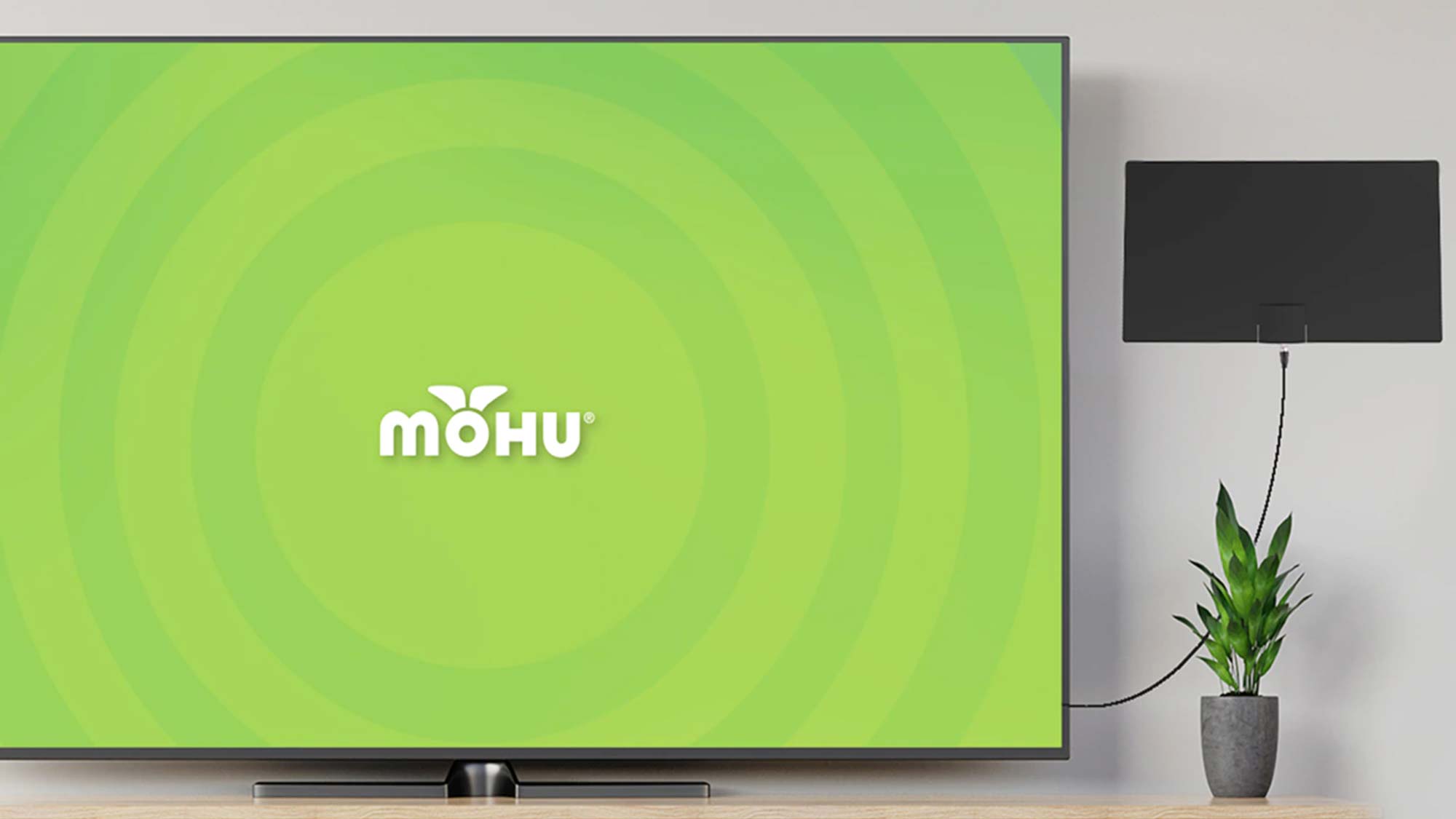Tom's Guide Verdict
A slightly more expensive but capable antenna, the Leaf Supreme Pro goes big to pull in more stations.
Pros
- +
Solid reception
- +
Simple set up
- +
Detachable cable
Cons
- -
Sizable presence on your wall
Why you can trust Tom's Guide
Range: 65 Miles
Channels Received: 42
Amplified: Yes
1080p Reception: Yes
Cable Length: 16 Feet
Size: 12 x 21.5 inches
It's not the newest TV antenna in town, but the Mohu Leaf Supreme Pro continues to be a solid indoor TV antenna that should suit most metro and suburban situations and most budgets. Even though it commands a price premium over some other flat antennas, this amplified model does a better job than most at capturing stations, and currently holds the top spot on our list on our list of the best TV antennas.
There are plenty of smaller flat models, such as the one seen in our RCA ANT3ME review, but they generally pull in fewer over-the-air stations. The catch is that the Mohu Leaf Supreme is nearly twice the width of typical flat indoor antennas like the RCA model, and it leverages that wider wingspan to pull in more channels. So many shoppers may find the decision here is based as much on design as performance.
It may be from before 2021, but it still offers peak performance.
Mohu Leaf Supreme Pro review: Design
Black on one side and white on the other, the Mohu Leaf Supreme Pro is the largest indoor model the company currently sells.
As mentioned earlier, measuring 12 x 21.5 inches, it's roughly double the breadth of other flat, plastic models. The company includes Velcro-style stick-ons and push pins for window or wall mounting.
It can't be put in a table-top stand, but its coaxial cable is detachable, should you need to place it farther away from the set than the included 16-foot cable allows. The amplifier, built into the base of the attachment, shows signal strength via 4 LEDs.
Mohu Leaf Supreme Pro review: Setup
The antenna comes with a coaxial cable to connect to your TV and a USB power cable for the built-in amplifier, but no AC power plug. So you can plug it into a powered USB port on your TV or into a USB power adapter of your own to give the signals an extra boost. The USB power cord is only about 3 feet long, which may mean you'll need an extension to reach the powered port on a large screen TV or a power brick plugged into a wall outlet. (To reach our standard test position, we needed to use a USB extension cable.)
Get instant access to breaking news, the hottest reviews, great deals and helpful tips.

One annoyance about setup, the Mohu Leaf Supreme Pro has to be partially rolled up to fit into its retail box. Consequently, to unfurl it properly we had to flatten it out with weights for 24 hours before we could test it.
Before you settle on a permanent spot for the Mohu Supreme or make a decision on what type of antenna you may need, we recommend checking what local over-the-air stations are available in your area by visiting a site such as Antennaweb.org. By searching your zip code you can get a list and a map of the location of local broadcast towers.
Mohu Leaf Supreme Pro review: Performance
According to Mohu, the Leaf Supreme Pro's first-stage amplification is designed to reduce pixelation and picture distortion that often makes some marginal stations unwatchable. We found this was generally the case, clearing up some recalcitrant channels and making tuning in stations considerably less frustrating.
Using the amplifier, the Mohu Leaf Supreme Pro registered 42 channels in initial scans. That's a better than average result — the amplified RCA ANT3ME pulled in 33 watchable stations, for example — but more impressive was the fact that all of those stations came in clearly. Usually a review of all the channels reveals several that are not actually viewable due to picture or sound breakups. Still, the Leaf Supreme Pro could not capture the challenging CBS affiliate at the bottom of the dial or the local Fox affiliate.
The amplifier also seemed to help. Consider that without the amplifier plugged in, only 36 channels were found in our tests. Most of what was missed were popular Spanish language stations near the top of the dial in New York City.
Compared to other flat antennas, the Mohu Leaf Supreme Pro performed well. The $89 Antop HD Smart Antenna SBS-301 is a smaller flat amplified antenna, but it only received 33 channels, for example, and this larger model did better than Mohu's own less-expensive $65 Mohu Leaf 50 Indoor Amplified HDTV Antenna, which only pulled in 27 stations in our tests.
Are there better performers? Most certainly, but those antennas generally are indoor/outdoor models that cost more, such as the $100 Winegard Elite 7550 Outdoor HDTV Antenna, which received 73 stations in our tests, and the $120 Antop AT-800SBS HD Smart Panel Antenna, which captured 68 channels.
Mohu Leaf Supreme Pro: Verdict
If you've got the wall space or can hide it behind a bookcase or your TV, the Mohu Leaf Supreme Pro is a very good choice for capturing TV broadcasts, especially in suburban locations. It's easy to set up and only $20 to $30 more than many comparable indoor antennas.
The excellent reception means that it's a step up from other amplified antennas, including favorites from our best TV antennas list, like the Mohu Arc Pro and the Antop HD Smart Antenna SBS-301. Bottom line: Consider upgrading to the Mohu Leaf Supreme Pro, particularly if a smaller model didn't do the trick.
John R. Quain has been reviewing and testing video and audio equipment for more than 20 years. For Tom's Guide, he has reviewed televisions, HDTV antennas, electric bikes, electric cars, as well as other outdoor equipment. He is currently a contributor to The New York Times and the CBS News television program.





